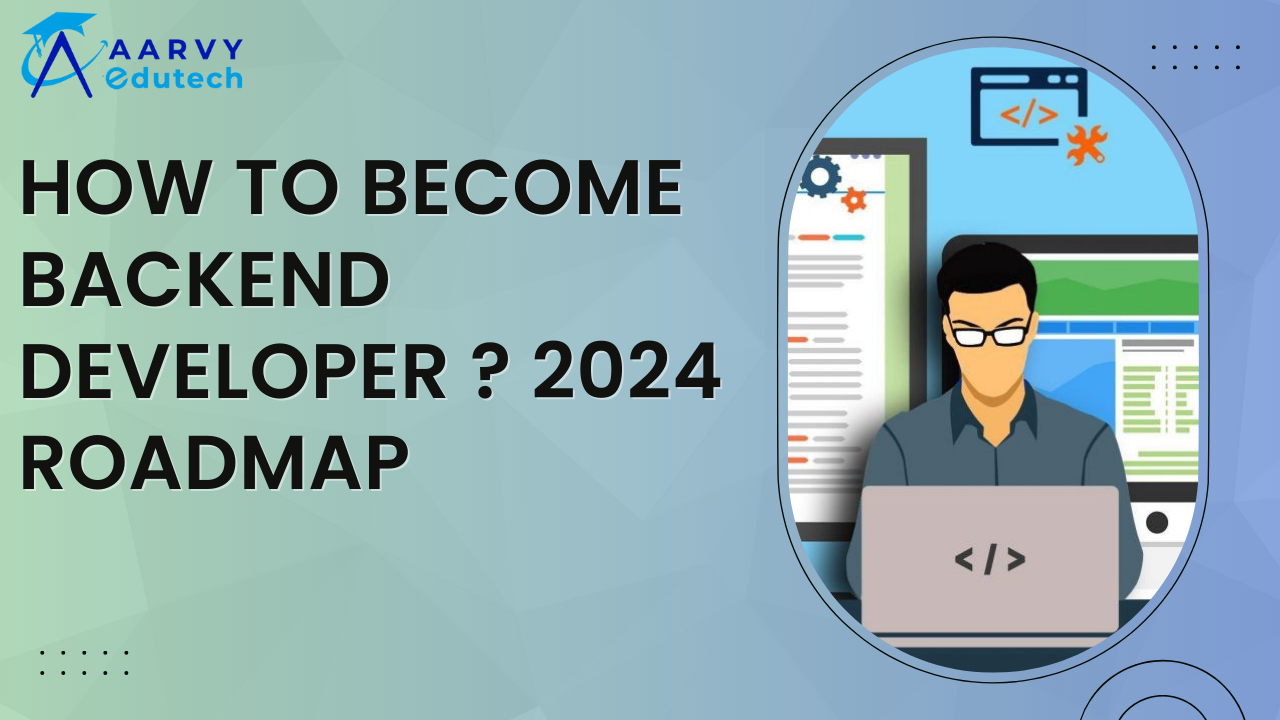
Welcome to the thrilling world of back-end development! Here, you’ll be the architect behind the scenes, crafting the logic that powers websites and applications. This guide equips you with the essential knowledge and skills to embark on this rewarding journey.
Laying the Foundation: Programming Fundamentals
Our adventure begins with understanding the languages computers speak. Explore the basics of popular back-end languages like Python, JavaScript, Java, or Ruby. Grasp core concepts like variables, data types, conditional statements, loops, and functions. These building blocks are the foundation for constructing powerful back-end systems.
But the magic doesn’t stop there. Delve into the fascinating world of data structures (arrays, linked lists, trees) and algorithms (sorting, searching). These tools enable efficient organization and manipulation of data, the lifeblood of any application.
Finally, meet Git, your trusty companion for version control. Git keeps track of changes to your code, allowing you to rewind, collaborate seamlessly with others, and maintain a clean codebase. Mastering Git streamlines your development workflow and ensures a smoother journey.
Choosing Your Weapon: Mastering a Back-End Language
Now comes the exciting part: selecting your weapon of choice! The back-end battlefield offers a variety of powerful languages, each with its strengths. Consider industry demand and your personal preference. Python, renowned for its readability, excels with frameworks like Django and Flask. JavaScript, the king of the front-end, reigns supreme on the back-end too, with Node.js leading the charge. Java, a robust and versatile language, boasts the powerful Spring Framework. Ruby on Rails, known for its developer-friendly nature, empowers rapid application development.
Once you’ve chosen your language, dive deep! Explore its syntax, libraries, and frameworks in detail. Practice writing clean, efficient code, and experiment with building small projects to solidify your understanding.
Unveiling the Data Vault: Databases Demystified
Data is the fuel that powers applications. Here’s where databases come in – the organized storage houses for this valuable information. Buckle up as we explore two main database types: relational and NoSQL.
Relational databases, like MySQL and PostgreSQL, organize data in structured tables with rows and columns. They excel at handling complex relationships between data points. NoSQL databases, like MongoDB and Redis, offer flexibility for storing unstructured or rapidly changing data.
Understanding both types is crucial. Learn how to design, query, and interact with databases effectively. Mastering database skills empowers you to efficiently store, retrieve, and manipulate data – the backbone of any back-end system.
Connecting the Dots: APIs and Web Services
Applications rarely operate in isolation. APIs (Application Programming Interfaces) act as intermediaries, allowing applications to exchange data seamlessly. Dive into the world of RESTful APIs, a popular architectural style for building web services that follow clear design principles. Learn how to design, consume, and integrate APIs into your back-end applications.
Behind the Scenes: Web Servers and Deployment
Imagine a bustling restaurant kitchen. The web server is like the head chef, coordinating requests and delivering responses. Apache and Nginx are two popular web servers that handle incoming traffic and serve your application to users.
Once your masterpiece is complete, it’s time to deploy it to the real world! Platforms like Heroku, AWS, or Azure provide the infrastructure to host your application. Explore deployment strategies and consider containerization technologies like Docker for efficient packaging and distribution of your code.
Securing the Castle: Security Awareness
Security is paramount. Hackers lurk in the shadows, so fortify your applications against common vulnerabilities like SQL injection and Cross-Site Scripting (XSS). Understanding these threats and implementing secure coding practices is essential.
Encryption and hashing techniques safeguard sensitive data, while secure communication protocols like HTTPS encrypt communication between your application and users. Prioritizing security ensures your applications are robust and trustworthy.
Collaboration Made Easy: Version Control and Collaboration
Remember Git, our version control hero? Now it’s time to unleash its full potential. Master branching strategies to isolate changes and collaborate effectively with other developers. Utilize platforms like GitHub, GitLab, or Bitbucket to manage code versions, track changes, and streamline collaboration through pull requests. Version control ensures a clean, organized codebase and fosters seamless teamwork.
Testing and Debugging: Unearthing the Bugs
No code is perfect. Bugs, those pesky errors, are inevitable. Here’s where testing comes in! Learn about different testing methodologies like unit testing (focusing on individual components) and integration testing (ensuring components work together). Frameworks like Jest and JUnit streamline the testing process.
Debugging skills are essential too. Master the art of identifying and fixing errors using debugging tools and techniques. Remember, effective testing and debugging are your secret weapons for ensuring high-quality, reliable applications.
Automation Power: Continuous Integration and Deployment (CI/CD)
Imagine a tireless assistant who automates repetitive tasks. That’s the magic of Continuous Integration and Deployment (CI/CD). CI/CD pipelines automate the entire software development lifecycle, from testing to deployment. Tools like Jenkins, Travis CI, or GitHub Actions integrate seamlessly with your workflow.
By embracing CI/CD, you can release updates faster, reduce errors, and free up time for more creative endeavors.
Building Your Arsenal: Real-World Projects
Theoretical knowledge is powerful, but practical experience is the key to mastery. Now it’s time to embark on your own coding odyssey! Build real-world projects to apply your newfound skills. Start small with personal projects that pique your interest. This hands-on experience solidifies your understanding and builds an impressive portfolio showcasing your capabilities.
Consider contributing to open-source projects – a fantastic way to collaborate with experienced developers and learn from their expertise. Every project you tackle hones your skills and propels you closer to your back-end developer goals.
Staying Sharp: Continuous Learning
The world of back-end development is dynamic and ever-evolving. Stay ahead of the curve by embracing continuous learning! Immerse yourself in the vibrant developer community. Explore blogs, forums, and tech communities to keep abreast of the latest trends, updates, and best practices.
Attend meetups, workshops, and conferences – fantastic avenues to network with fellow developers, learn from industry leaders, and discover cutting-edge technologies. Staying updated ensures your skill set remains relevant and valuable in the ever-changing tech landscape.
Collaboration is Key: Networking and Community
No developer is an island. Collaboration is the fuel that drives innovation. Network with other developers, attend hackathons, and participate in online coding communities. These interactions expose you to diverse perspectives, foster knowledge sharing, and spark new ideas.
Working on projects with others hones your communication and teamwork skills, crucial for success in any development environment. The developer community is a valuable resource – leverage it to grow your network, learn from others, and build your reputation as a skilled back-end developer.
The Never-Ending Journey
The path to back-end mastery is an exciting odyssey of continuous learning, exploration, and creation. Embrace the challenges, celebrate your victories, and never stop learning. With dedication, passion, and the roadmap outlined here as your guide, you’ll be well on your way to becoming a back-end developer extraordinaire!

